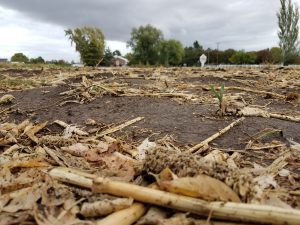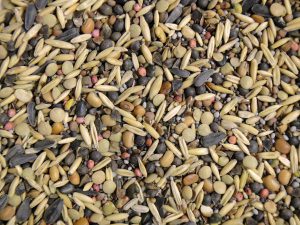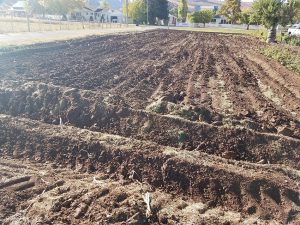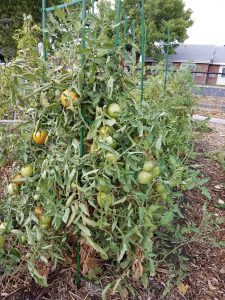In this issue, learn about some post-season practices and how they can relate to integrated pest management. Topics include:
- Field/Garden Clean-Up
- Fall/Winter Cover Crops for Vegetable Production
- Soil Management Options
- Unripen Tomatoes
Field/Garden Clean-Up

Once the fall harvest is completed, it is necessary to begin the clean-up process for both fields and garden sites. Site sanitation is one of the most critical components for healthy vegetable production. A few clean-up techniques include:
- Removing diseased plants and residue from site. This will help prevent any fungus or bacteria from overwintering in that site.
- Remove weeds within the planting area before they seed. This will prevent germination next season and minimize locations for insects to overwinter.
- Any unmarketable (but disease-free) produce left over can be composted.
More Information:
2017 Garden Clean-Up Advisory
USU Extension – Fall Yard Cleanup
Fall/Winter Cover Crops

Vegetable production can often remove large amounts of nutrients from the soil. One option to lessen this problem is to plant cover crops. The three main types of cover crops include; grasses, legumes, and broadleaf crops. When considering the cover crop type, be sure to develop a timeline for planting through termination. Cover crops can typically be planted in the fall after harvest and garden clean up. Some additional benefits from cover crops include:
- Reduce fertilizer costs, as cover crops can add nitrogen and other decreasing nutrients.
- Increase the overall organic matter within the soil.
- Improve the water infiltration and conserves soil moisture.
- Reduce soil compaction and prevent erosion.
If you’re interested in using cover crops in your garden or field consider factors such as seed cost, crop selection, and early irrigation.
Using cover crops on the farm or in the garden is a large topic to cover. Further information will be included in future advisories, but for now, the following links provide lists of cover crop species and methods for introduction as a plant health management tool.
Cover Crops for Vegetable Production in Utah
Cover Crops for Utah Gardens
Soil Management Options

Soil management is an important component in vegetable production, regardless of location, size, or crops grown. It is important to have an understanding of the soil in your home garden or farm field. Important knowledge to have include: soil type, soil texture, drainage, pH, and nutrients available.
With this information, you can develop a management plan in terms of crop selection, irrigation, and pest management. In the spring before planting, having your soil tested would be a good idea to determine pH levels and nutrient availability. This information can assist in the most beneficial management plan.
More Information:
Soil Testing
Web Soil Survey
Preparing and Improving Garden Soil
Green Tomatoes

As colder weather approaches, there has been concern about tomatoes that never fully ripened and remain green on the vine. There are a variety of factors to why this might have occurred:
- Tomatoes take six to eight weeks from the time of pollination until full fruit maturity. So seeds planted later in the spring or early summer may not have been allowed the time to grow in sync with the seasonal temperatures.
- The temperatures this summer and early fall have been extremely warm in Utah. The lycopene and carotene (which causes the tomato pigment to turn red) will not produce above 85 degrees.
More Information:
Why aren’t my tomatoes ripening? (New York Extension)
How to ripen green tomatoes (Colorado State Extension)
